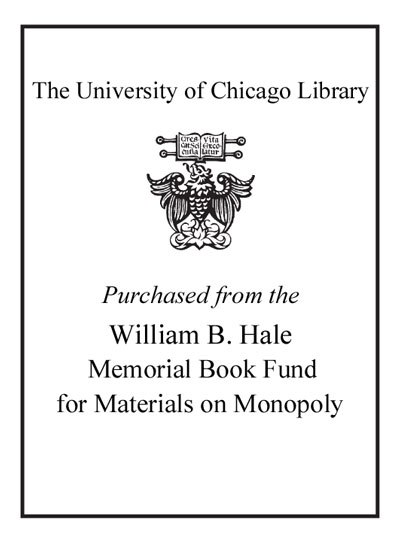Tying and bundling as a leveraging concern under EC competition law /
| Author / Creator: | Langer, Jurian. |
|---|---|
| Imprint: | Alphen aan den Rijn, The Netherlands : Kluwer Law International ; Frederick, MD : Sold and distributed in North, Central, and South America by Aspen Publishers Inc., c2007. |
| Description: | xxvii, 266 p. : ill. ; 25 cm. |
| Language: | English |
| Series: | International competition law series ; v. 30 |
| Subject: | |
| Format: | Print Book |
| URL for this record: | http://pi.lib.uchicago.edu/1001/cat/bib/6648410 |
| Summary: |
and#8226; What tests are available to determine whether two products are distinct or not? and#8226; Under which circumstances is anti-competitive leveraging feasible? and#8226; Which efficiency motivations should be accepted? and#8226; How does one valuate the possible efficiencies in the short run and the risk of leveraging effects in the long run? and#8226; What factors should be considered when answering the separate product issue? and#8226; What are the implications for the burden of proof under article 82 EC? and#8226; Does the application of a more effects-based approach under article 82 also affect the dominance analysis? In his examination of the various responses to these probing questions, the author is able to formulate a very useful diagnosis of what factors determine whether a tied or bundled entity is likely to engender anti-competitive effects. The presentation is supported throughout by detailed reference to relevant legal-economic doctrine, laws, and judicial interpretation by European and U.S. courts, the European Commission, and antitrust agencies. In its development of effects-based tests for assessing tying and bundling practices, this important book will be of special value to policymakers and regulatory officials involved in enforcement of EC or Member State competition law. It will also be welcomed by academics in both law and economics as a truly cogent and workable approach to the solution of one of the most vital and intriguing debates in the antitrust field. |
|---|---|
| Physical Description: | xxvii, 266 p. : ill. ; 25 cm. |
| Bibliography: | Includes bibliographical references (p. [241]-256) and index. |
| ISBN: | 9041125752 9789041125750 |

